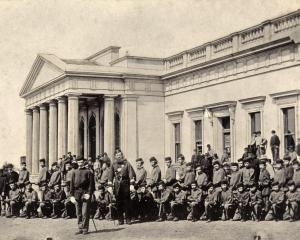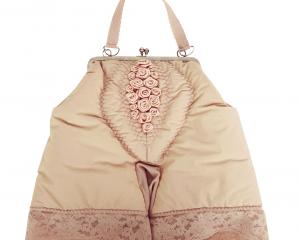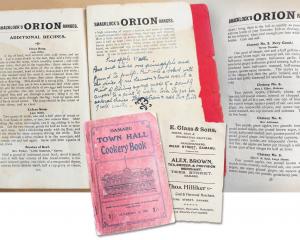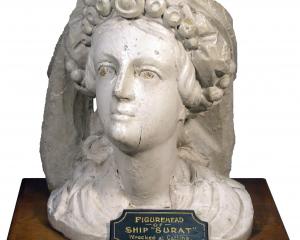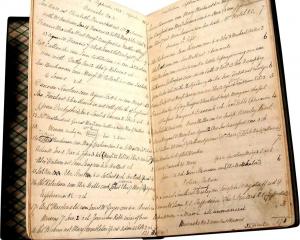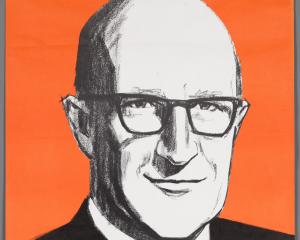
Most are constructed from two layers of fabric, with the outside in one type, colour or pattern of material, and the inside of another.
Designs might allow wearers to manage changeable (or southern-style) climates, attend back-to-back social - or work and social - appointments, or stretch limited budgets. It’s a basic two-for-the-price-of-one appeal, that offers a solution to pressures on time, income, cleaning or weather. In novels, they might also more excitingly be part of a spy’s wardrobe of quick-change disguises.
A number of reversible garments have waterproof fabric on one side, and ordinary cloth on the other. Reversible coats, capes and caps abound. In 1853, Wellington’s Gilbert Pickett & Co advertised "Impervious and Reversible Coats", while nearby Holdsworth, Knowles & Co stocked "Waterproof, Repellent and Reversible Coats".
In 1923, the Ladies’ Mirror recommended adaptable garments "for wear on doubtful days". It described hats with one side cloth, the other waterproof gaberdine, and velvet capes with waterproof silk linings so "when the shower comes on it is only necessary to turn the wrap inside out to secure complete protection from the rain".
The Police Gazette seems an unlikely source of textile trivia but records a number of 19th-century reversible garments. In 1863, Thomas Barrow, "an Englishman, but looks and speaks like a yankee", escaped custody while under escort from Dunstan to Dunedin, wearing a reversible jacket, "napped light grey on one side, dark or black striped on the other"; John Watkins lost a light-coloured reversible jacket at the Princes Theatre, Dunedin, in 1864; and James Malcolm’s reversible tweed waterproof coat, "one side brown, the other side brown and red check", was stolen from the Shamrock Hotel in Rattray St in 1886.
More reports can be read in a multitude of publications. Reversible winter shawls were stocked by drapers, Thomson, Strang & Co, in 1875. Reversible silk scarves and ties were widely advertised in following years. In 1913, Palmerston North’s Collinson & Cunninghame, advertised "London’s very latest craze - a light; handy, reversible soft satin Cap; very smart".
In the 1880s, Joseph Lowenthal claimed to have designed a reversible coat, that could "be used with propriety either as a dress-coat or for working purposes, and to furnish a double garment of equal elegance of fit and make on both sides".
The brave Highlander, Lord Archibald Campbell, was quoted as advocating a reversible kilt in 1900 - tartan on one side, and fawn-coloured on the other, which would be worn facing outwards in battle, making a less conspicuous target for enemy fire.
Less charming reversible designs include one for a young child’s dress that was "only slightly soiled" on the outside, as a "suitable and effective means for diminishing the necessary laundry"; and a dress for adult women that could be comfortably rotated to be worn back-to front.
Couturiers also engaged with the idea. A "dual clothing" trend in 1950 meant Norman Hartnell, Peter Russell and Charles Creed all showed reversible coats that year. Gus Fisher’s upmarket El Jay label was making elegant reversible poplin coats in Auckland in the late 1970s, one of which will be on display in late March in the Transformation section of Otago Museum’s "Fashion Forward >> Disruption through Design".
And it continues. The world’s first reversible wedding dress, by Aotearoa designer, Trish Peng, made fashion headlines in 2019; Emilio Pucci is currently advertising reversible swimsuits.
Suffering reverses is associated with defeat and setback. In general, we prefer to trust what we see; we use "two-faced" in a critical way if speaking of people. It’s pleasing, then, to consider that in fashion, reversibility has such positive associations. Whether it is to reduce consumption, expand choices, cherish hidden potential, or for the innate intrigue of transformation, reversible garments seem an enduring and constructive fascination.
- Moira White is humanities curator at Otago Museum.



